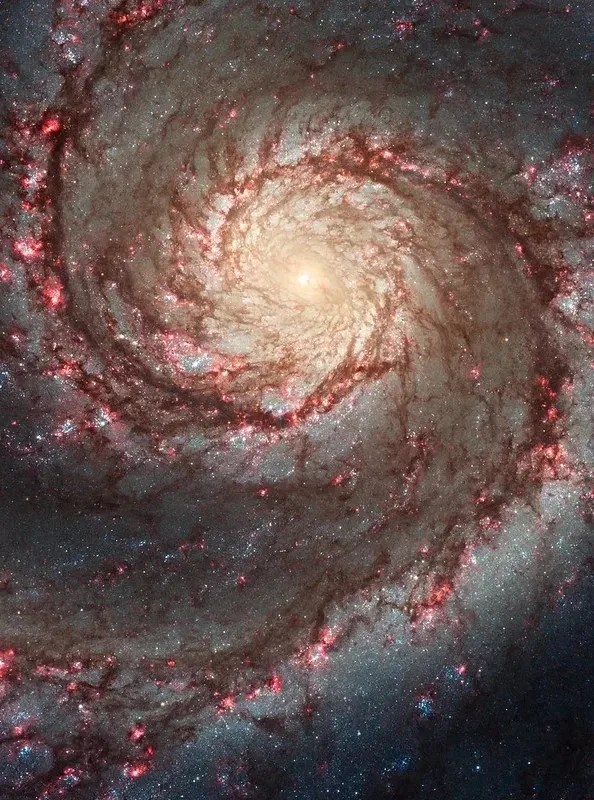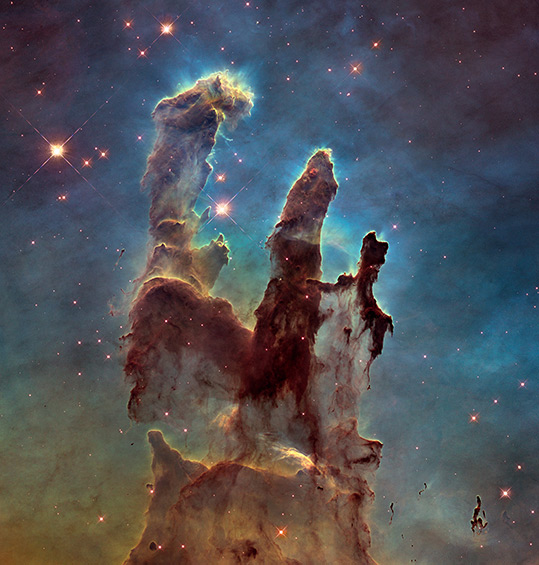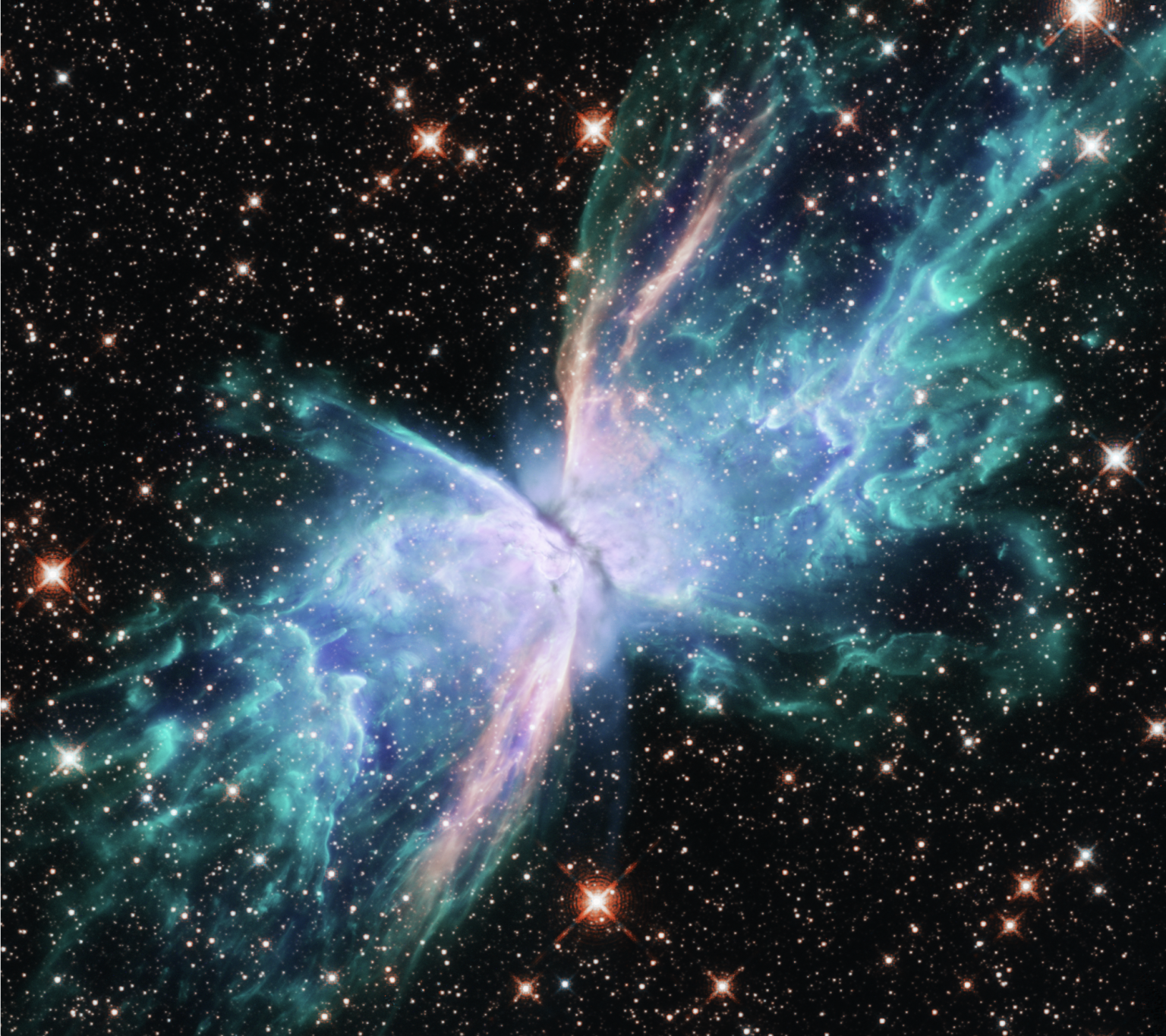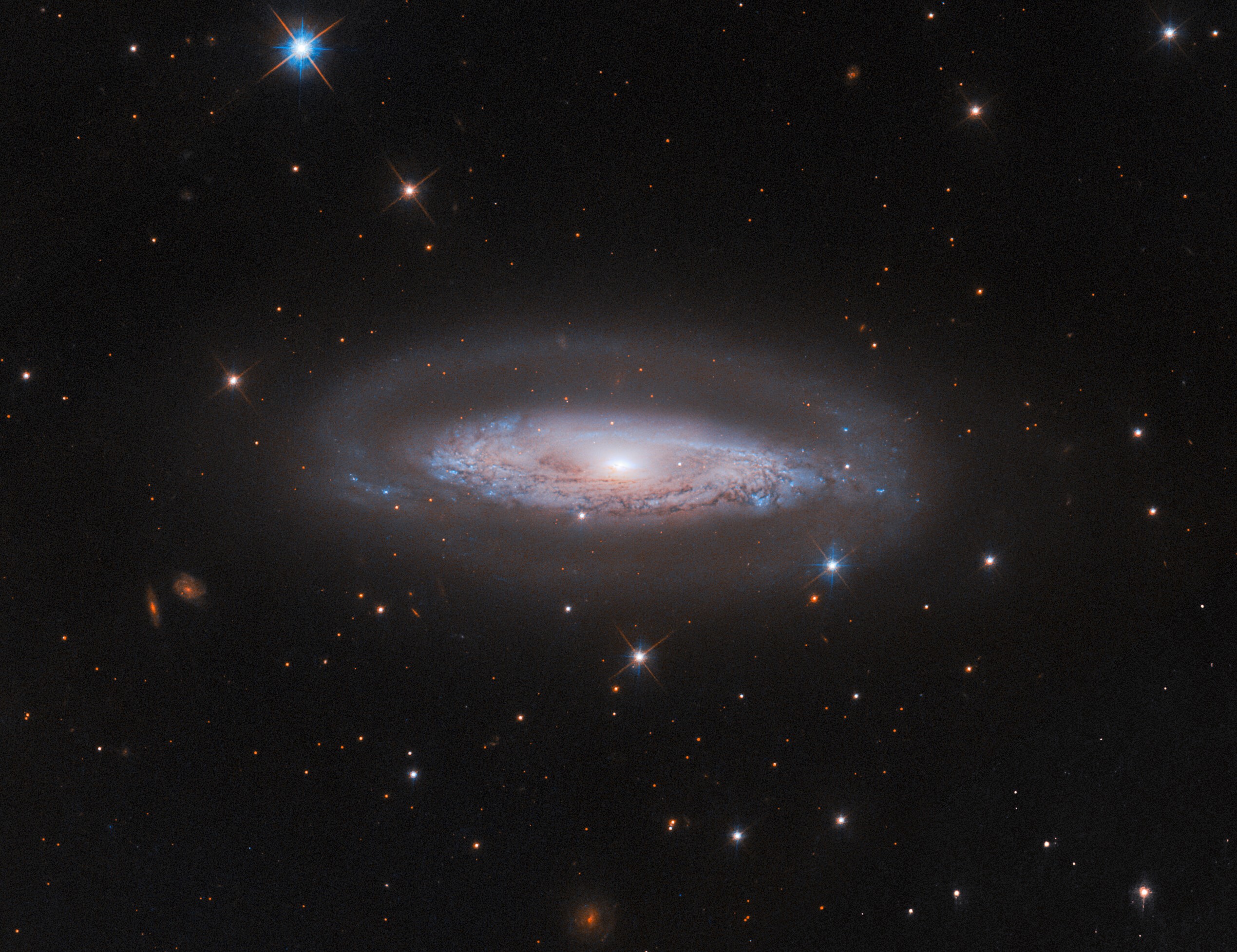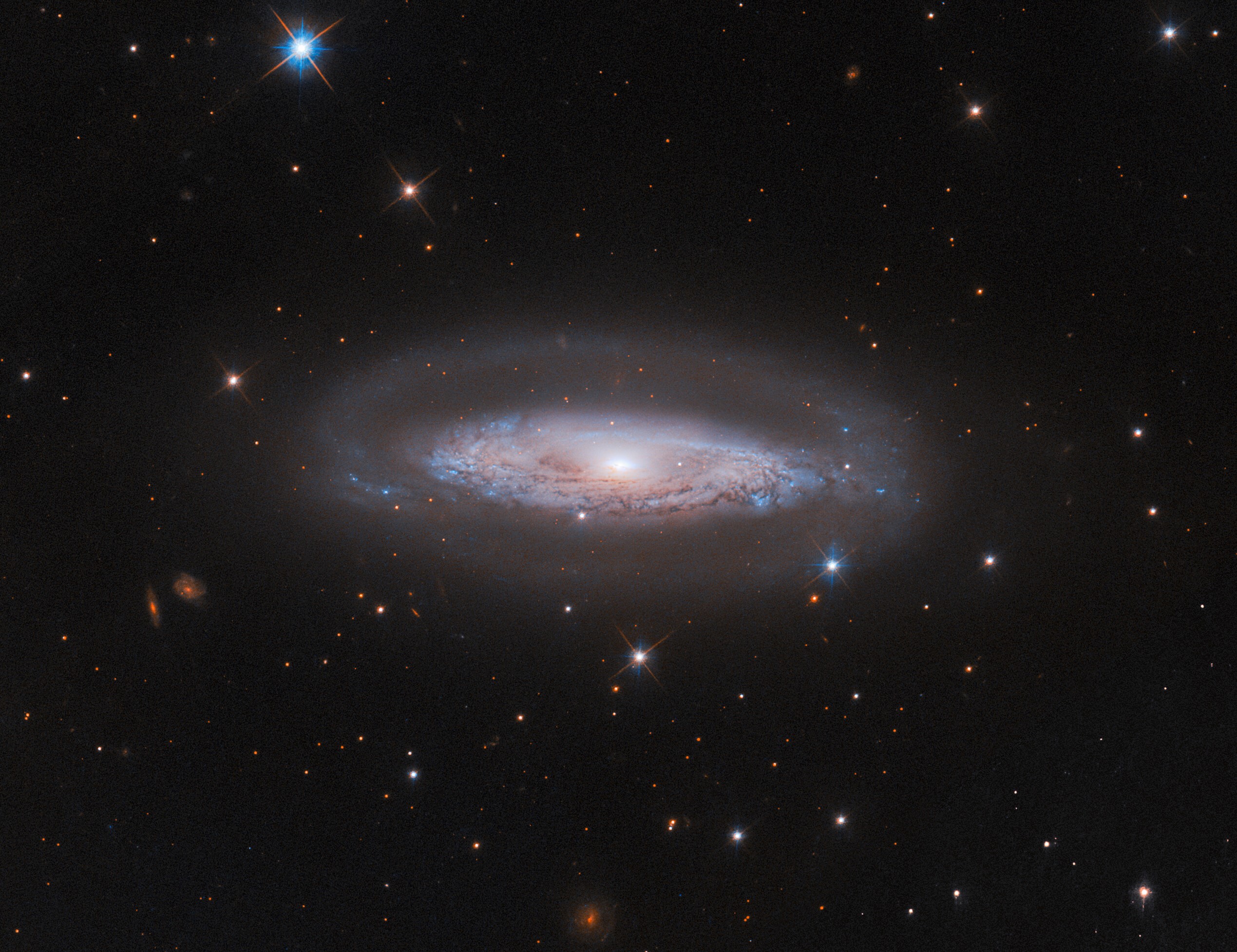Hubble Space Telescope Home Hubble Examines a Busy… Missions Hubble Home Overview About Hubble The History of Hubble Hubble Timeline Why Have a Telescope in Space? Hubble by the Numbers At the Museum FAQs Impact & Benefits Hubble’s Impact & Benefits Science Impacts Cultural Impact Technology Benefits Impact on Human Spaceflight Astro Community Impacts Science Hubble Science Science Themes Science Highlights Science Behind Discoveries Hubble’s Partners in Science Universe Uncovered Explore the Night Sky Observatory Hubble Observatory Hubble Design Mission Operations Missions to Hubble Hubble vs Webb Team Hubble Team Career Aspirations Hubble Astronauts News Hubble News Hubble News Archive Social Media Media Resources Multimedia Multimedia Images Videos Sonifications Podcasts E-books Lithographs Fact Sheets Glossary Posters Hubble on the NASA App More Online Activities 2 min read
Hubble Examines a Busy Galactic Center 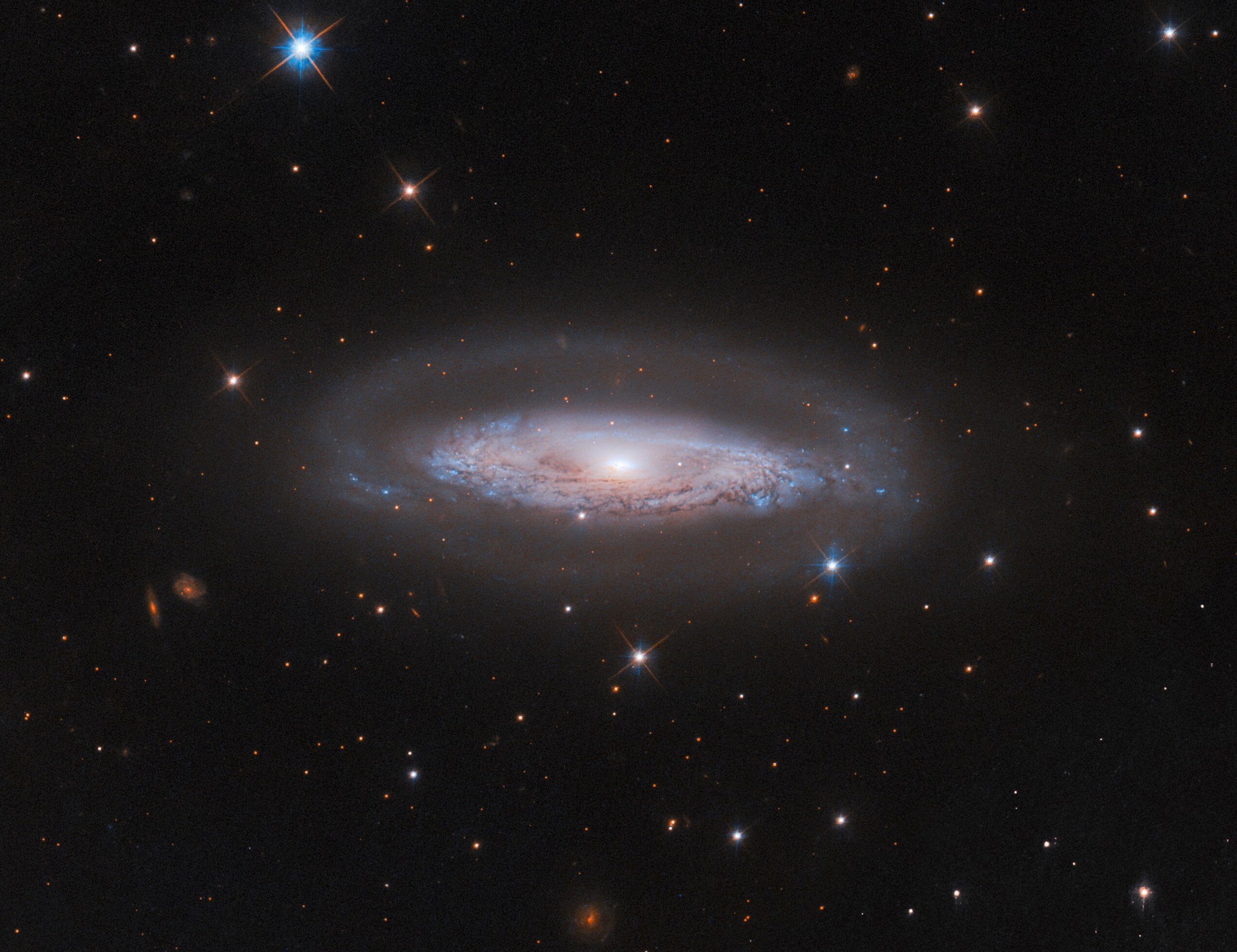 This NASA/ESA Hubble Space Telescope image features the active spiral galaxy IC 4709. ESA/Hubble & NASA, M. Koss, A, Barth This NASA/ESA Hubble Space Telescope image features the spiral galaxy IC 4709a located around 240 million light-years away in the southern constellation Telescopium. Hubble beautifully captures its faint halo and swirling disk filled with stars and dust bands. The compact region at its core might be the most remarkable sight. It holds an active galactic nucleus (AGN).
This NASA/ESA Hubble Space Telescope image features the active spiral galaxy IC 4709. ESA/Hubble & NASA, M. Koss, A, Barth This NASA/ESA Hubble Space Telescope image features the spiral galaxy IC 4709a located around 240 million light-years away in the southern constellation Telescopium. Hubble beautifully captures its faint halo and swirling disk filled with stars and dust bands. The compact region at its core might be the most remarkable sight. It holds an active galactic nucleus (AGN).
If IC 4709’s core just held stars, it wouldn’t be nearly as bright. Instead, it hosts a gargantuan black hole, 65 million times more massive than our Sun. A disk of gas spirals around and eventually into this black hole, crashing together and heating up as it spins. It reaches such high temperatures that it emits vast quantities of electromagnetic radiation, from infrared to visible to ultraviolet light and X-rays. A lane of dark dust, just visible at the center of the galaxy in the image above, obscures the AGN in IC 4709. The dust lane blocks any visible light emission from the nucleus itself. Hubble’s spectacular resolution, however, gives astronomers a detailed view of the interaction between the quite small AGN and its host galaxy. This is essential to understanding supermassive black holes in galaxies much more distant than IC 4709, where resolving such fine details is not possible.
This image incorporates data from two Hubble surveys of nearby AGNs originally identified by NASA’s Swift telescope. There are plans for Swift to collect new data on these galaxies. Swift houses three multiwavelength telescopes, collecting data in visible, ultraviolet, X-ray, and gamma-ray light. Its X-ray component will allow SWIFT to directly see the X-rays from IC 4709’s AGN breaking through the obscuring dust. ESA’s Euclid telescope — currently surveying the dark universe in optical and infrared light — will also image IC 4709 and other local AGNs. Their data, along with Hubble’s, provides astronomers with complementary views across the electromagnetic spectrum. Such views are key to fully research and better understand black holes and their influence on their host galaxies.
Facebook logo @NASAHubble @NASAHubble Instagram logo @NASAHubble Media Contact:
Claire Andreoli
NASA’s Goddard Space Flight Center, Greenbelt, MD
claire.andreoli@nasa.gov
Details Last Updated Sep 05, 2024 Editor Andrea Gianopoulos Location NASA Goddard Space Flight Center Related Terms Active Galaxies Astrophysics Astrophysics Division Galaxies Goddard Space Flight Center Hubble Space Telescope Missions Spiral Galaxies
Keep Exploring Discover More Topics From Hubble Hubble Space Telescope
Since its 1990 launch, the Hubble Space Telescope has changed our fundamental understanding of the universe.

